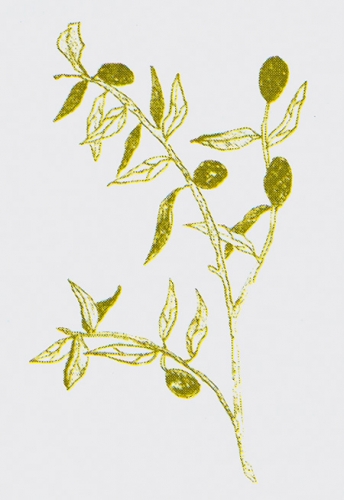 Timeless spring has its sharp teeth buried in my back flank, urging me to finish the last plantings of April before summer rises up out of the warm ground to claim the garden. Today, Sarah and I are planting a young olive tree on the edge of the Edible Schoolyard garden at Martin Luther King, Jr. Middle School in north Berkeley, with the help of a few rapscallion seventh graders. And, hard as I try to resist, the primordial olive is pulling me down again into the well of time.
Timeless spring has its sharp teeth buried in my back flank, urging me to finish the last plantings of April before summer rises up out of the warm ground to claim the garden. Today, Sarah and I are planting a young olive tree on the edge of the Edible Schoolyard garden at Martin Luther King, Jr. Middle School in north Berkeley, with the help of a few rapscallion seventh graders. And, hard as I try to resist, the primordial olive is pulling me down again into the well of time.
I began my studies of Zen meditation and agriculture in 1971 in Jerusalem on the Mount of Olives with Japanese Zen master and poet Soen Nakagawa Roshi. Sitting in our small, international zendo perched above the Dead Sea, I listened to the wind in the olive trees mix with the muezzin’s call to dawn prayer. “If you go out on the roof of the zendo in the morning, you can see the huge sun emerge from the Dead Sea beyond the desert of Judas,” Soen Roshi observed. “You see ‘o-live’ and ‘dead’ from the same place.”
A stranger in a strange land, whenever I lost my bearings in Israel, the gnarled olive trees of Jerusalem grounded me and brought me home. Their bitter fruit and rich, green oil braces with what Lawrence Durrell called, “a taste as old as cold water.” Originating in western Asia and Mesopotamia, the olive has been cultivated for ten thousand years, though on the Aegean island of Santorini, fossilized olive leaves have been discovered dating back some thirty-five thousand years.
To the ancient Greeks, the olive was a mythological tree, sacred to Athena, the protectress of wisdom. When the gray-eyed goddess thrust her spear into the barren soil of Attica to claim the land from Poseidon, her weapon burst into leaf and became Athens’ original olive tree. In the first Olympic games, athletic heroes were crowned with wreaths of silver and green olive branches, signifying peace and long life, woven together.
In the Middle East, the olive is a religious and secular symbol of peace, wealth, and abiding goodness, though like the uncured fruit of the olive itself, this peace is not without its own bitterness. Seventy years after the death of Christ, Roman soldiers slashed down the olives of the Garden of Gethsemane, while modern inhabitants of Israel have uprooted thousands of fruiting olive trees, the plant of blessing for Islam, relied on for centuries to mark the true boundaries of Palestinian land. In the northeastern quarter of the Fertile Crescent, in present-day Mesopotamia, the Tigris and Euphrates uncurl—slow, unctuous rivers like black gold coursing through the abandoned olive groves of Iraq, while the ripe fruit goes unpicked.
 The olive tree matures slowly over time, yet the first-century Roman botanist Pliny the Elder described an olive grove that remained fruitful for more than seven hundred years. Apparently, the olive has the uncanny ability to renew itself from destruction and decay, for long after an individual tree dies, the plant’s massive root ball continues to pump with life, throwing out new shoots for several centuries.
The olive tree matures slowly over time, yet the first-century Roman botanist Pliny the Elder described an olive grove that remained fruitful for more than seven hundred years. Apparently, the olive has the uncanny ability to renew itself from destruction and decay, for long after an individual tree dies, the plant’s massive root ball continues to pump with life, throwing out new shoots for several centuries.
Back in the school garden, our modern olive tree is almost planted. Slow-growing, the olive needs scant water to get established, yet its hidden roots seek out moisture to a depth of twenty feet. Nearby, the excited middle school students swarm like fruit flies around their new tree. Griffin, a seventh grader, produces a handful of savory olives he and his dad have cured from their home olive tree. The taste is strong, as old as cold water, and just as deep, war and peace together on the tongue, “o-live” and “dead” from the same source.